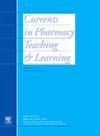A holistic approach to integrating well-being into pharmacy education: Reflection and lessons learned
IF 1.4
Q3 EDUCATION, SCIENTIFIC DISCIPLINES
引用次数: 0
Abstract
Purpose
Prioritizing cultures of well-being in pharmacy schools/colleges is essential and timely. Advancing well-being initiatives promotes healthier learning and workplace environments, mitigates burnout and distress, and supports long-term sustainability in the profession. However, tailored strategies and guidance are necessary to effectively address the diverse and unique needs of pharmacy schools/colleges.
Description
Given a recognized need to increase student supports, University of California San Diego (UCSD) Skaggs School of Pharmacy and Pharmaceutical Sciences (SSPPS) has taken proactive steps to promote a holistic approach to student well-being. Over the past 10 years, SSPPS has progressively developed a comprehensive well-being program that now includes a dedicated wellness advisor, learning specialist, disability expert, targeted well-being programming, and collaborations with a robust network of campus and community resources.
Analysis/Interpretation
The evolution of this holistic approach has yielded several key lessons: the importance of a clear vision, strong partnerships, consistent presence, patience, and persistence. These insights have guided the creation of a flexible framework designed to support other institutions while accommodating variations in organizational resources and cultures.
Conclusions
There is no one-size-fits-all approach to building a holistic well-being program for pharmacy schools/colleges. Institutions must leverage their unique strengths and address specific challenges to develop sustainable well-being cultures tailored to their needs.
Implications
Sharing reflections, innovative program elements, and future plans may inspire multi-institutional collaboration, enhancing collective well-being across the pharmacy profession. By learning from one another, pharmacy schools/colleges can amplify efforts to support students and prepare them to thrive in demanding healthcare environments.
将幸福纳入药学教育的整体方法:反思和经验教训
目的:在药学院/学院优先考虑健康文化是必要和及时的。推进福祉倡议促进更健康的学习和工作环境,减轻倦怠和痛苦,并支持职业的长期可持续性。然而,量身定制的策略和指导是必要的,以有效地解决药房学校/学院的多样化和独特的需求。鉴于认识到需要增加学生的支持,加州大学圣地亚哥分校(UCSD)斯卡格斯药学院和制药科学学院(SSPPS)采取了积极主动的措施,以促进学生福祉的整体方法。在过去的10年里,SSPPS逐步发展了一个全面的健康计划,现在包括一个专门的健康顾问,学习专家,残疾专家,有针对性的健康计划,并与强大的校园和社区资源网络合作。分析/解释这种整体方法的演变产生了几个关键的教训:清晰的愿景、强有力的伙伴关系、始终如一的存在、耐心和坚持的重要性。这些见解指导了灵活框架的创建,该框架旨在支持其他机构,同时适应组织资源和文化的变化。结论:没有放之四海而皆准的方法来为药学院/学院建立一个全面的福利计划。各机构必须利用其独特优势,应对具体挑战,发展符合自身需求的可持续福祉文化。分享反思、创新项目元素和未来计划可能会激发多机构合作,增强整个药学专业的集体福祉。通过相互学习,药学学校/学院可以加大力度支持学生,并为他们在苛刻的医疗环境中茁壮成长做好准备。
本文章由计算机程序翻译,如有差异,请以英文原文为准。
求助全文
约1分钟内获得全文
求助全文
来源期刊

Currents in Pharmacy Teaching and Learning
EDUCATION, SCIENTIFIC DISCIPLINES-
CiteScore
2.10
自引率
16.70%
发文量
192
 求助内容:
求助内容: 应助结果提醒方式:
应助结果提醒方式:


